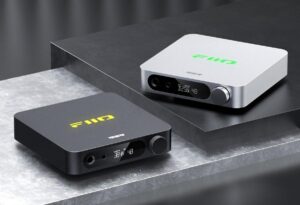The Pixel 6a brought a sleek design and Google’s signature smart cameras to the mid-range market. Now the brand new Pixel 8a is here, tempting Pixel 6a owners with the promise of even more. But is it worth the upgrade? Here’s everything you need to know.
We’ll take a deep dive into the key differences between the Pixel 6a and 8a, helping you decide if the 8a’s advancements justify the switch. We’ll explore everything from camera upgrades and AI features to performance enhancements and software support. By the end, you’ll have a clear idea of whether the Pixel 8a is the perfect upgrade for your Pixel 6a, or whether your faithful companion can still handle it.
Hardware
Google noticeably refined the design language between the Pixel 6a and 8a. The 6a retains a two-tone aesthetic, while the 8a adopts a more comfortable, curved design that echoes the flagship Pixel 8 series. Both phones use brushed aluminum bezels for a solid feel, but the 8a takes a clear step forward with a textured matte back versus glossy plastic at 6a.
This textured finish not only improves grip, but also improves fingerprint resistance and scratch protection, giving the 8a a more premium feel overall, even though it’s still an affordable entry point to the Pixel series. One sore point is increased mass. An extra 10g doesn’t seem like much, but some may notice the jump and find it a disappointing size increase.
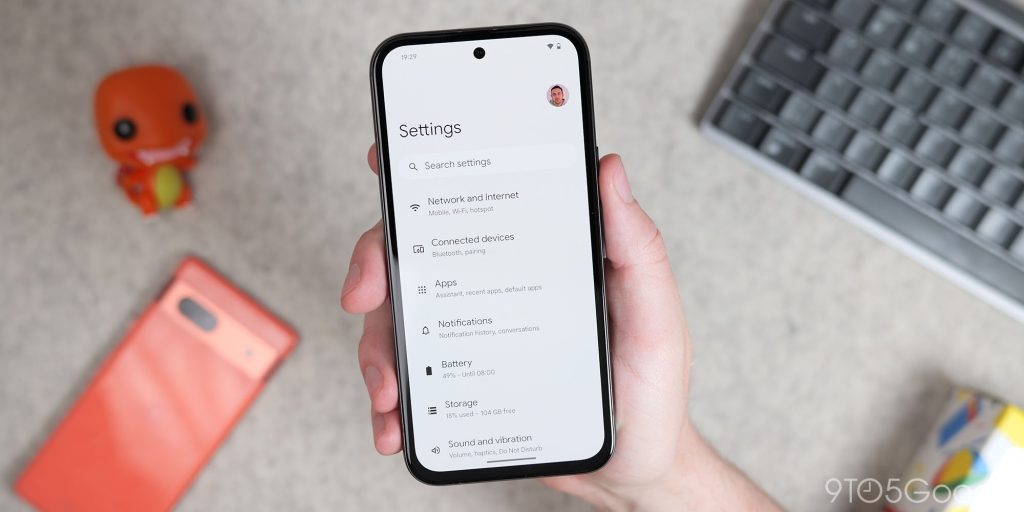
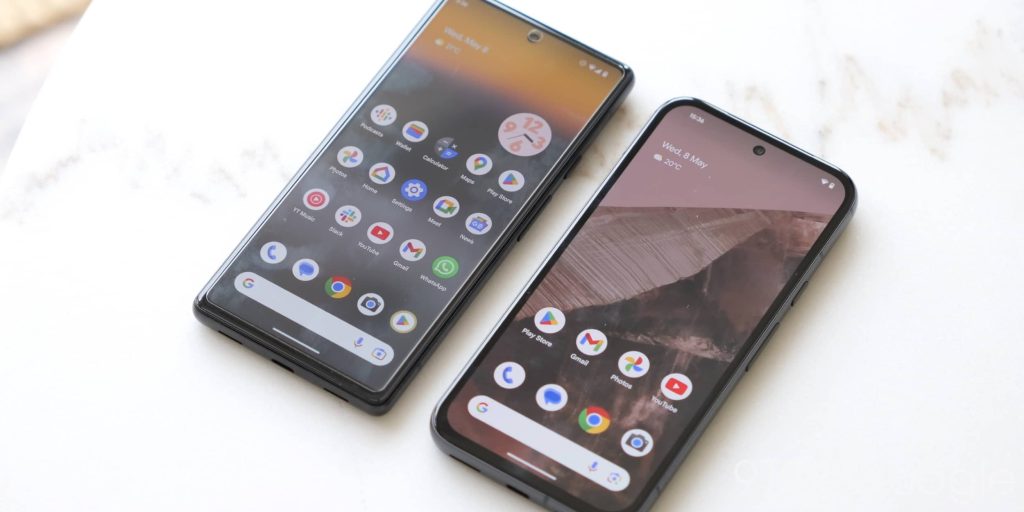
While the specs may offer similar displays (both 6.1-inch 1080p OLED panels with Gorilla Glass 3), the Pixel 8a boasts significant improvements that should help the experience on a day-to-day basis. It features a smooth 120Hz refresh rate, doubling the frame rate of the 6a’s 60Hz panel.
This means significantly smoother scrolling, animations and gameplay on 8a. In addition, the 8a’s display boasts a peak brightness of 2000 nits, which is almost three times the 780 nits of the 6a. This means the newer hardware has vastly improved outdoor visibility, richer HDR content with deeper blacks and brighter highlights, and more vivid colors.
| Google Pixel 6a | Google Pixel 8a | |
| Size | 6.1 inches | 6.1 inches |
| Dimensions | 152.2 x 71.8 x 8.9 mm (5.99 x 2.83 x 0.35 in) | 152.1 x 72.7 x 8.9 mm (6.00 x 2.87 x 0.35 in) |
| Display | 60Hz / FHD+ / Gorilla Glass 3 / 2400 x 1080 pixels / 429ppi | 120Hz / FHD+ / Gorilla Glass 3 / 2400 x 1080 pixels / 430ppi |
| Chipset | Google Tensor G1 | Google Tensor G3 |
| RAM | 6GB DDR5 | 8GB DDR5 |
| Storage | 128GB UFS 3.1 | 128/256GB UFS 3.1 |
| Battery | 4410 mAh | 4492 mAh |
| Rear camera | 12.2MP wide / 12MP ultrawide | 64MP wide / 13MP ultrawide |
| Front camera | 8MP | 13MP |
| Biometrics | In-display fingerprint scanner | In-display fingerprint scanner |
| Colors | Sage / charcoal / chalk | Obsidian / Porcelain / Bay / Aloe |
| Weight | 178 gr | 188g |
| IP rating | IP67 | IP67 |
The most significant difference is under the hood. The Pixel 6a’s Tensor G1 chip with 6GB of RAM remains a capable performer for everyday tasks, but the Pixel 8a’s Tensor G3 chip paired with 8GB of RAM offers a significant leap forward. This means faster app load times, smoother multitasking, and the ability to handle more demanding apps. The G3 chip also unlocks new functionality such as secure biometric app login using facial recognition, something completely missing from the 6a.
More importantly, the G3 boasts improved thermal management compared to its predecessor. This means the Pixel 8a stays cooler during extended use, such as running navigation apps or using your phone as a mobile hotspot. As a result, you’ll experience smoother performance even in these demanding conditions, but there’s a little extra grunt to do more with your phone, from gaming to AI-powered features.
The Tensor G3 chip also paves the way for the Pixel 8a’s impressive 7-year software update schedule, ensuring your phone will receive the latest security fixes and features for years to come. In essence, the Pixel 8a delivers a more powerful, forward-looking experience that can handle your needs today and adapt to your demands tomorrow.
Software
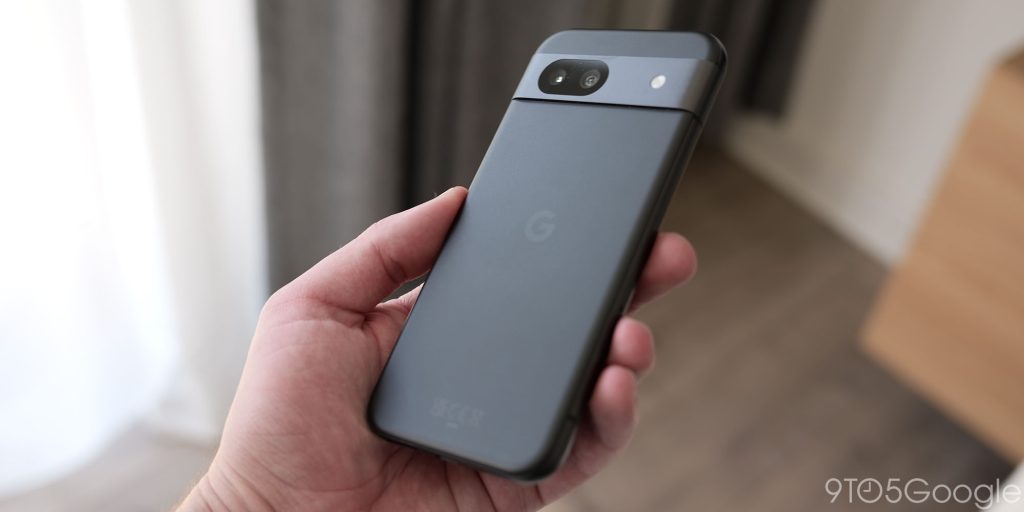
The software experience – while similar – between the Pixel 6a and 8a is a clear difference, with the 8a relying heavily on AI features. Both Pixel phones can run the latest Android 14 builds, which are visually very similar.
| Google Pixel 6a | Google Pixel 8a | |
| Software | It comes with Android 12 | It ships with Android 14 |
| Characteristic | In-display fingerprint scanner Magic eraser Face Unblur Movement modes Live translation on device |
In-display fingerprint scanner Face unlock Google One VPN Gemini Nano AI wallpapers Search circle |
However, for users who prioritize cutting-edge AI functionality, the Pixel 8a is the clear winner. It inherits a host of features from the Pixel 8 series, including AI-based summaries from Google Assistant, the ability to generate unique wallpapers based on your preferences, and advanced photo editing tools like the Magic Editor. Everyday tasks are also enhanced with AI features like improved call screening and Best Take, which automatically selects the best shot from a series of photos.
Additionally, the Pixel 8a is set to take advantage of Google’s Gemini Nano technology built into the device. This will unlock features like summarizing voice recordings, generating more insightful responses in Gboard, and even drafting messages in Google Messages using Magic Compose. While future updates that take advantage of the Gemini Nano’s potential are expected, it’s important to note that they’re not guaranteed at this point.
Naturally, anyone still using the Pixel 6a will consider the longevity of software support when deciding to upgrade. The Pixel 6a is nearing the end of its support lifecycle, with Android 15 likely to be its last major update. The Pixel 8a, on the other hand, boasts a significantly longer support window from the start. It ships with Android 14 and will be supported with regular security patches and feature removals until 2031, according to Google’s update plans. When you consider the starting price, there are no other devices currently offering this level of longevity.
Essentially, both pixels will provide a clean and user-friendly experience. But if you long for the power of artificial intelligence to enhance your everyday smartphone use and want a future-proof device, the Pixel 8a is a compelling upgrade path.
Battery
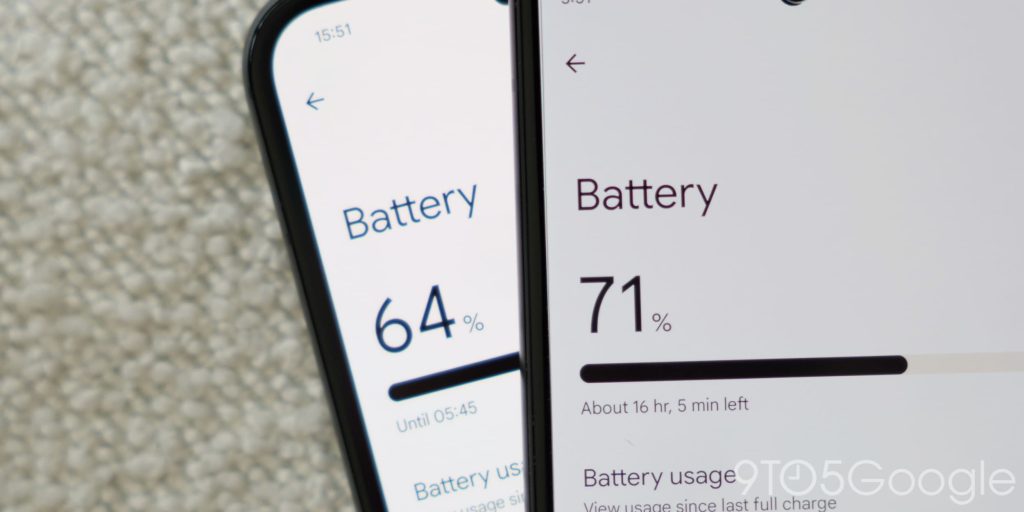
Fortunately, battery life isn’t a major factor to consider when choosing between the Pixel 6a and 8a. Both phones are equipped with very similar battery capacities: the 8a boasts a slightly larger 4,492 mAh battery compared to the 6a’s 4,410 mAh. In layman’s terms, this means both phones should comfortably last a full day of moderate use, as advertised by Google. However, if your 6a is a few years old, it may be time for a refresh or a new battery due to general wear and tear.
| Google Pixel 6a | Google Pixel 8a | |
| Battery size | 4410 mAh | 4492 mAh |
| Loading speed | 18W cable | 18W cable 7.5W Qi wireless |
While the Pixel 8a’s Tensor G3 chip may be slightly more efficient in terms of power management, any real differences in battery life are likely to be minor. Both phones support the same 18W wired charging speeds, so neither device will take significantly longer to top up.
The only real difference in charging comes with the introduction of wireless charging on the Pixel 8a, albeit at a slower rate of 7.5W. This is possible with the Google Pixel Stand or compatible Qi wireless charging pads. If you value wireless charging as an option, the newer model may sound even more enticing.
Cameras
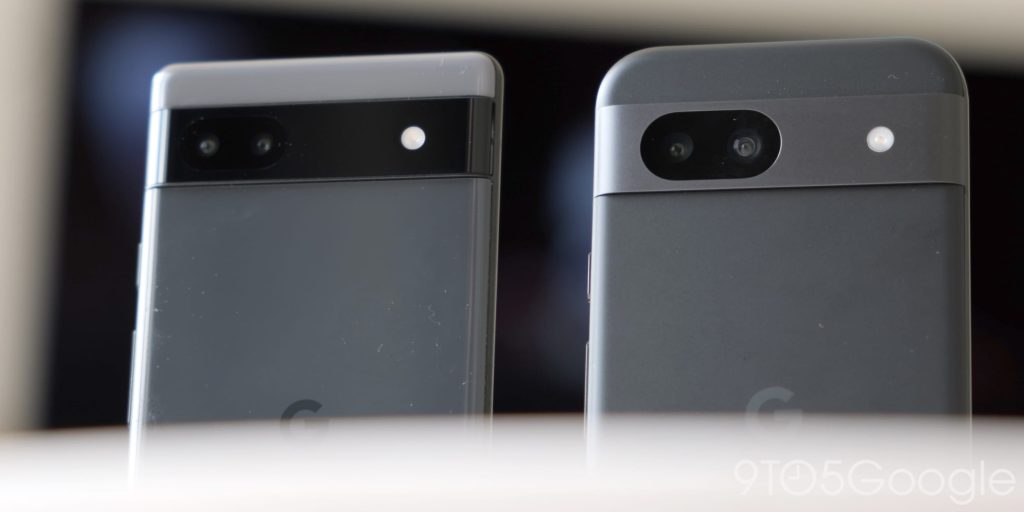
Let’s delve into the Pixel 8a’s camera. Here the news depends on your point of view. The 8a uses the same Sony IMX787 sensor as its predecessor, the 7a. So if last year’s improvements didn’t wow you, this year’s iteration likely won’t either.
| Google Pixel 6a | Google Pixel 8a | |
| Main sensor | Sony IMX363 12.2MP aperture f1.7 |
Sony IMX787 64MP aperture f1.9 |
| Secondary sensor | Sony IMX386 12MP ultra-wide aperture f2.2 114˚ FOV |
Sony IMX712 13MP ultra-wide aperture f2.2 120˚ FOV |
| Front sensor | Sony IMX 355 8MP aperture f2.0 |
Sony IMX712 13MP f/2.2 |
| Camera hardware specifications | OIS EIS PDAF |
OIS EIS PDAF |
| Camera software features | Night portrait Portrait light 4K UHD 60fps Real tone Cinematic pan Focus locked Active mode |
8x magnification Water frame 4K UHD 60fps 4K UHD 30fps (selfie and wide angle) 10-bit HDR10 video RealTone 2.0 Magic editor Best reception Magic eraser Blur photos Audio Magic Eraser |
However, there are some key improvements to consider. The Pixel 8a boasts a significant upgrade over the practically old 12-megapixel Sony IMX363 used on the Pixel 6a, to a larger, 64-megapixel main lens. This means noticeably sharper photos, especially in low-light conditions or when using 2x to 8x digital zoom. Additionally, the ultra-wide lens offers a slightly wider field of view of 120 degrees compared to the Pixel 6a’s 114 degrees, allowing you to capture even more in a single shot.
But the real game-changer for the 8a’s camera lies in its software. Google packs the 8a with their most advanced AI features yet, including Magic Editor, Best Take, Magic Eraser, and even Audio Magic Eraser – features that are completely missing from the Pixel 6a. These AI functions offer impressive capabilities, such as easily correcting blurred faces or unwanted objects in photos (Magic Eraser), automatically selecting the best photo from a series (Best Take), and effectively removing background noise from videos (Audio Magic Eraser).
The potential of these AI features is significant, offering a more polished and versatile photography experience. While the hardware may not be a drastic leap forward, the exciting software capabilities make the Pixel 8a’s camera a compelling option for those who prioritize AI photo editing and manipulation.
Pixel 6a vs. Pixel 8a: Should I upgrade?
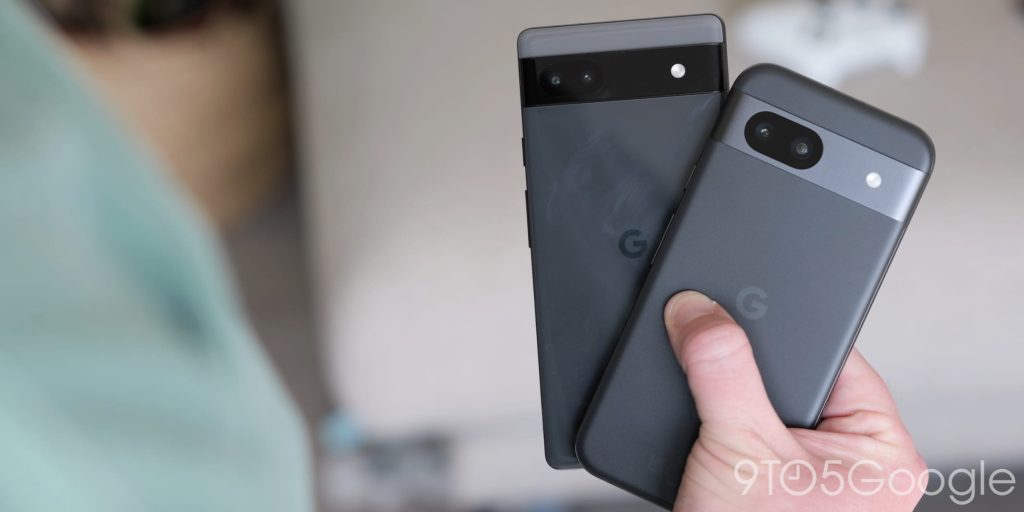
About the upgrade: 9to5Google often makes specific product recommendations. Sometimes we may suggest no upgrade, for various reasons, including but not limited to: increased cost of the device, minor performance increase, or environmental impact. Whether to upgrade is always up to you, but our goal is to help you make the most informed decision possible.
Upgrading from the Pixel 6a (or older) to the Pixel 8a depends on your priorities. Value-focused consumers will find the Pixel 8a compelling with its Tensor G3 chip, robust AI features, a 7-year update commitment, an improved fingerprint scanner, and a better modem. However, if you prioritize premium build quality, faster charging speeds, and a sleeker design, waiting for a good deal on the regular Pixel 8 (potentially around $550) might be a better strategy.
On the other hand, if you’re an innovation seeker, waiting a few months for the Pixel 9 series with its refreshed design and potentially exclusive features could be the most rewarding option. Ultimately, the choice depends on your budget and needs. If you need an upgrade now and value AI features and long-term support, the Pixel 8a is a solid option. But if you’re prioritizing hardware or yearning for the latest innovations, waiting for the discounted Pixel 8 or Pixel 9 series might make more sense.
Take the Pixel 8a
FTC: We use automatic affiliate links that earn revenue. More ▼.

